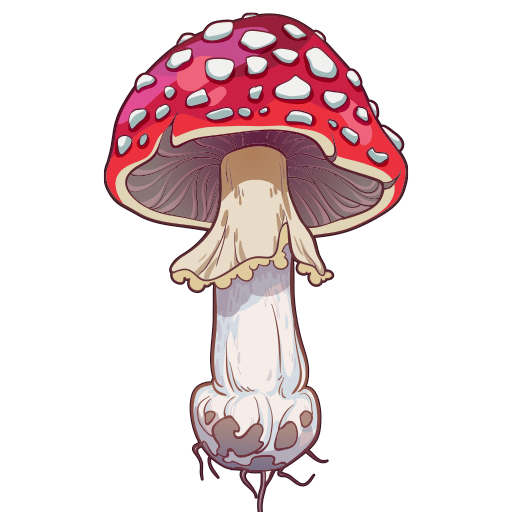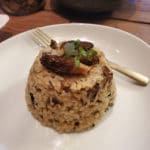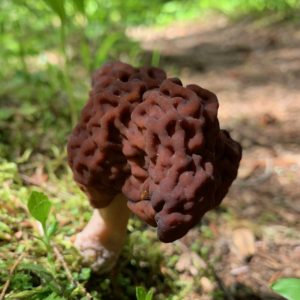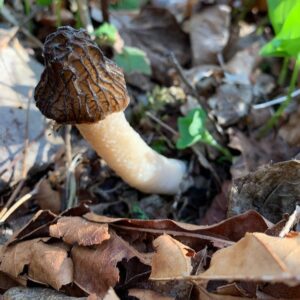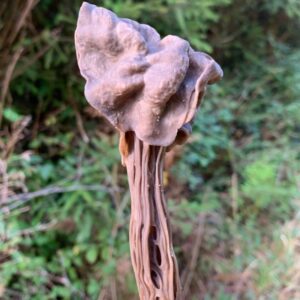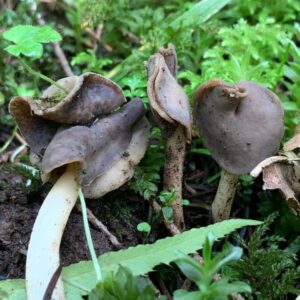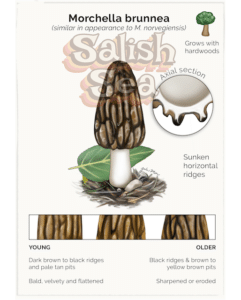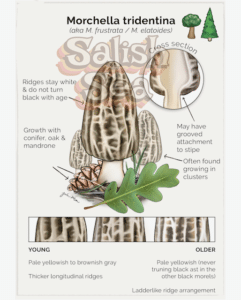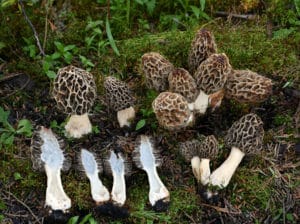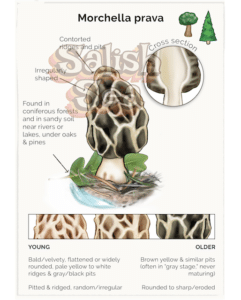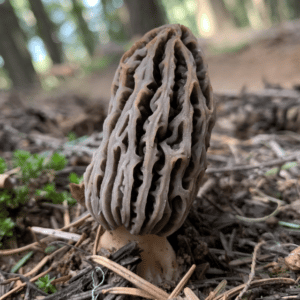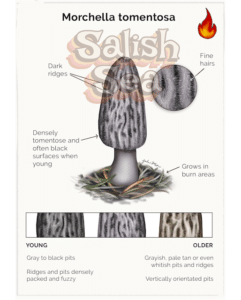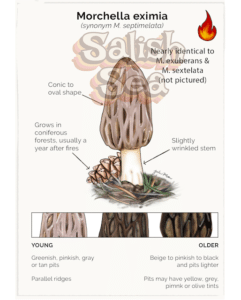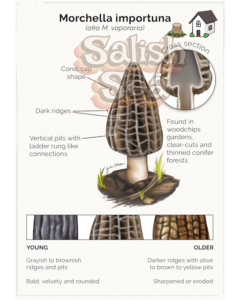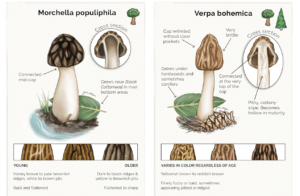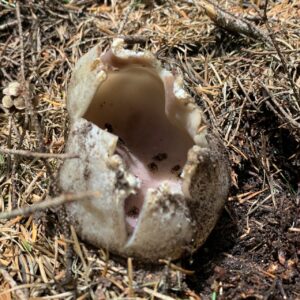Morel season in Oregon and Washington
When do morels fruit in Oregon and Washington?
Morels fruit in the spring starting in the southern part of our range and at low elevations. As the weather warms morels will fruit farther north and at higher elevations. Below is a chart illustrating when morels can be found in various PNW regions.

Key Morel Features
Honeycomb Pockets
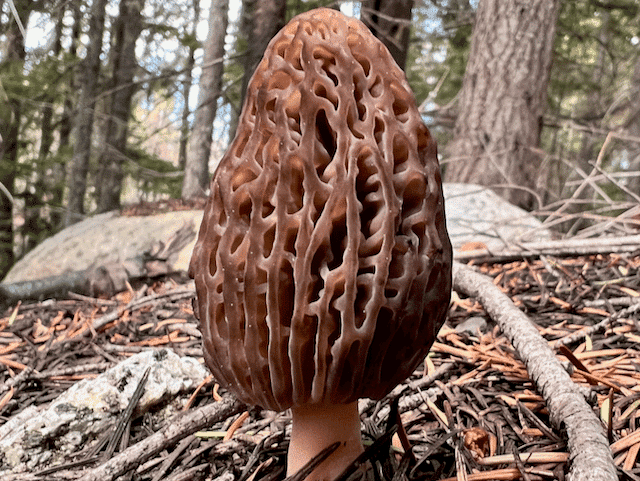

Cap Fused to Stem
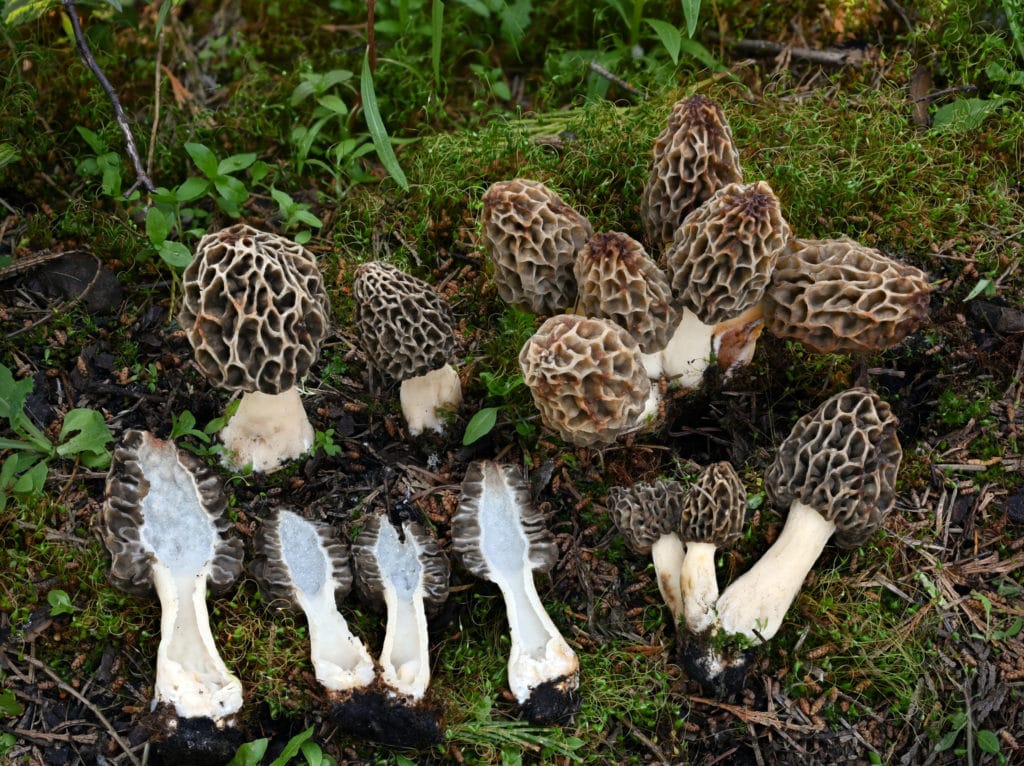
(c) Alan Rockefeller
Hollow
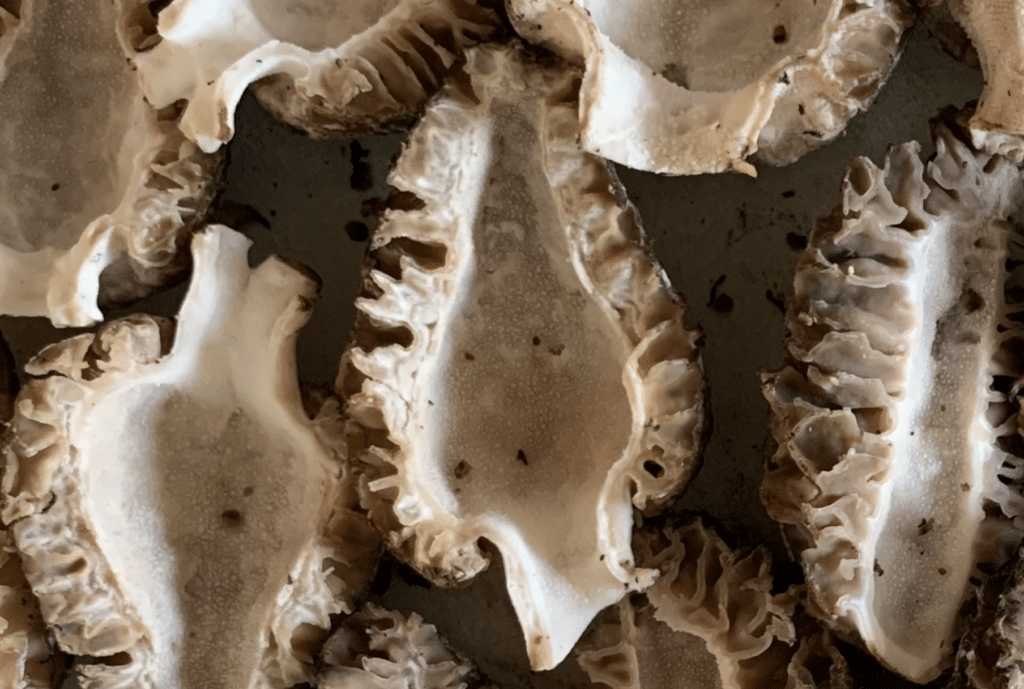
These Are Not Morels
Gyromitra esculenta
How to recognize morel vs Gyromitra:
Gyromitra do not have the deep honeycomb pockets that are key for identifying morels. Instead that have smooth, wavy, and folded outer tissue. This often creates a brain-like surface texture.
Verpa
How to recognize a Verpa:
Verpa caps are not fused in the stem as found with most true morels. Verpa caps sit on top of the stem with empty space between the cap and stem.
The interior of Verpa mushrooms are often filled with a cottony pith. As the mushroom ages this pith can dry out making it appear hollow.
The interior of a true morel is nearly always hollow. Some morels can have a chambered interior but this is uncommon.
Helvella
How to recognize a Helvella:
Helvella are known as the elfin saddles. They have a smooth, and often folded cap that contorts into a saddle-like shape. Many Helvella have pockets in the stem which referred to as ‘lacunose’.
Mushroom Toxins
Toxicity of Morels and False Morels in the Pacific Northwest
True Morels
The Naturals
Morchella brunnea and norvegiensis
These two morels are known as naturals because they fruit in natural environments with live trees. They also sit within a group known collectively as the ‘black’ morels which are often dark in coloration. The black morels generally have a conic shape as compared to the ‘blondes’ which are more rounded. These two mushrooms look nearly identical though one may be able to determine the true identity based on habitat as well as the texture of the stem.
Morchella norvegiensis
(aka Morchella eohespera)
found with live conifers
brittle stem
Morchella brunnea
stem is less brittle
grows with hardwoods
may be saprophytic
Morchella snyderi and Morchella tridentina
These two ‘natural’ morels also have the conic stature typical of the related black morels. These two differ in that they will at times show a lighter coloration.
Morchella snyderi
Distinctly pocketed or lacunose stem
Found with conifers
often dying Abies (fir) (sharp_eyez)
Ridges darken with age
Morchella tridentina
Fruits with both hardwoods (pacific madrone, oak) and conifers
Remains light in coloration throughout maturity
Range includes California and Oregon but not confirmed yet in Washington
(link)
The Blondes
Morchella americana and M. prava are true blondes which have a lighter coloration, and are more rounded than conic. M tridentina has blonde coloration but black stature and DNA. All fruit with live trees.
Morchella americana
- Found most commonly with cottonwood near river bottoms
- Can also be found with ornamental hardwoods in urban areas
- Light-coloration throughout development
- Rounded cap with consistent rounded pits
CC-BY Alan Rockefeller
Morchella prava
- First described to science in 2012
- Rounded cap
- Light colored ridges
- Irregular-shaped pits that may darken with age
- Found with conifer and hardwoods
- Prefers sandy soil near rivers or lakes
Morchella tridentina
- Blond coloration
- Rufescent (bruising reddish)
- Ridges and pits similar to black morels
- Genetically related to black morels
- (link)
Burn Morels
Burn morels show up in the spring 1-2 years after a forest fire. They include more than just these two species however differentiating among some of these species can be impossible even for an expert
Morchella tomentosa
Grey to black in coloration
Ridges and pits may have fine hairs (tomentose)
Stem walls are often thicker or even double-walled
Morchella eximia / exuberans / sextelata
Three burn morel species that can be quite difficult to differentiate
Lighter coloration when young
Ridges darken with age
Pits can be slightly pink or even green
Urban Morels
Many morel species can show up in urban environments. Some hitch a ride on wood chips while others might associate with ornamental trees. Here are a few examples
Morchella importuna
Classic wood chip morel
Typically found on 1 year old wood chips
Conic shape and dark coloration
Ridges and rungs arranged ladder-like
Morchella rufobrunnea
First described to science in 1998
Distinct phylogeny from the black and blondes
Pale coloration
Found in wood chips or disturbed habitats
Saprotrophic (decomposer)
Bruises a slightly pinkish orange color
Oddballs
These two mushrooms share a unique characteristic in that the cap is not fully attached to the stem like other morels. One of these is not a true morel.
Morchella populiphila
Populus-loving (Black cottonwood)
Found near rivers
Cap not fully fused to stem
Hollow interior
Not a true morel (Verpa)
Cap connected to stem only at top
Fruits with hardwoods and conifers
Somewhat brittle texture
Cottony or pithy interior
Indicator Species
These mushrooms are often found in the same areas as morels, but can also be found without morels.
Morels
It’s obvious, and still often overlooked. Finding one morel is your best indicator that there are more nearby. Slow down and look around

Geopyxis carbonaria
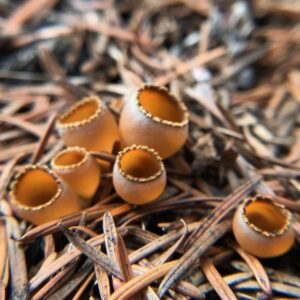
Morel Season
Morels are a spring mushroom but spring can be loosely defined and it depends largely on where you’re looking. This post is written from a PNW perspective.
Here are some of the ways one might estimate the right timing for morels.
Seasonality in your area
Searching for “Morchella” or “morels” on iNaturalist, then clicking “About” will bring you to this page. From here, enter a location like “Washington”, “Oregon”, or another region of your choice. Now you should see a graph that shows the seasonality of morels in this area.
In Washington state the peak season is May-June. Morels will start fruiting at the lower elevations first which could be as early as March in WA. Into the summer one can still find pockets of morels especially at higher elevations, north-facing slopes, and areas that continue to get rain later in the spring or summer.
Soil Temperature
Many suggest that morels rarely fruit before the soil temp is above 50F. Of course, it is difficult to judge soil temperature in the mountains from your home, you might try checking the soil temperature in your yard to give you a sense for how quickly it’s warming up in the spring. If you really want to nerd it up, you might keep a journal of local soil temp and correlate that with your success in the mountains to better plan in future years.
Follow the Crowd
Follow other foragers in your area. If they are finding mushrooms it could be time to start looking. You can also use iNaturalist to get an idea when people in your area are starting to find them. If you can’t get out regularly to check conditions, you can save yourself a lot of unproductive trips by waiting for the community to confirm when conditions are optimal.
Take your safety seriously. You should have multiple ways of keeping track of your location while foraging mushrooms. It is easy to become disoriented while staring at the ground away from a road or trail. It’s critical to know how to use your mobile device for navigation.
- Have a full charge on your mobile device
- Save battery life with low-power mode
- Understand your gps controls
- Never put your phone on the ground (learned from experience)
- Make sure someone knows where you are and when to expect you back
Indicator Species
You might be able to use other organisms as an indicator for suitable morel habitat. Here are some things I have heard, read, or observed that you might pay attention to and form your own theory or skepticism
- Trillium flowering
- The smell of cottonwoods blossoming
- Insects buzzing
- Salmonberry blossoms
